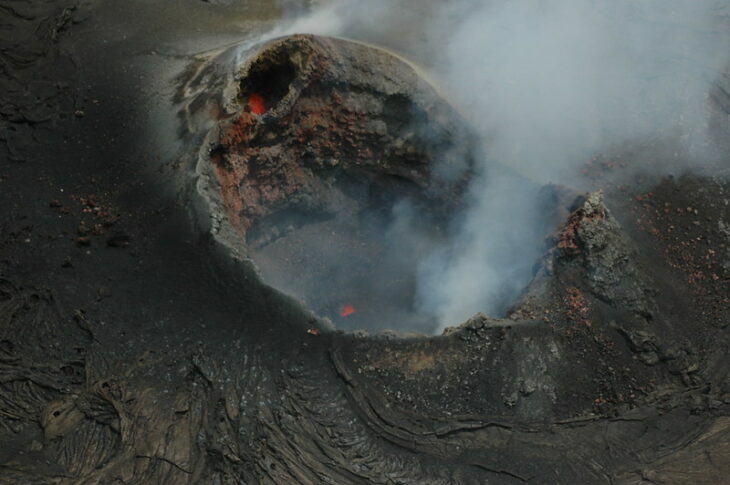The surface of Mars is currently inhospitable. Life there would have to endure harsh conditions like a thin atmosphere, freezing temperatures, and radiation. Extremophile microbes on Earth can overcome some of those challenges, but not all at once. So, if there is life on the red planet, how do Martian microbes beat the odds?
Caves might provide the answer. Many scientists think Mars has lava tubes that formed billions of years ago, when it was warm and had water. Caves offer protection from radiation and extreme temperatures on the planet’s surface. On Earth, they also contain nutrients and minerals that could support life. Scientists can’t yet send rovers into Martian caves, so they study similar places on Earth to develop the criteria to search for life on Mars.
A team of researchers led by C. B. Fishman at Georgetown University studied microbes that live in caves formed from lava tubes at Mauna Loa, Hawaii, to understand how they survive. Thanks to careful preservation by native Hawaiians, life in these lava tubes remains uncontaminated by visitors. Furthermore, scientists think the bedrock of the Mauna Loa tubes and the minerals that formed later from sulfur-rich gas inside are both similar to rocks in Martian caves.
The researchers assessed 5 samples from the brightest area near the entrance of the cave, 2 from a dimly lit area near a natural opening in the ceiling known as a skylight, and 5 from the darkest area of the cave. Samples in each area were chosen based on rock features. These included secondary minerals like calcite, sulfur-bearing minerals like gypsum and thenardite, and primary iron-bearing minerals like olivine and hematite.
The researchers saw that the minerals in the caves varied greatly over inches or centimeters. While the light samples primarily contained gypsum, no samples in the dark had the same dominant minerals. One contained mainly iron-bearing minerals, and the others contained mainly calcite, gypsum, and thenardite, respectively.
To identify the microbes in the samples, the team used a genetic marker known as the 16S rRNA gene, which can identify the known microbes in a sample and show how they’re related to one another. They also assembled whole genomes from the cave samples using a method known as metagenomic analysis. This is like following Lego instructions to build as many of each model, or microbe, as they can from a mixed pile of pieces, or bits of DNA. Researchers use this information to determine how known and unknown microbes make a living in their environment.
The team found that about 15% of the microbial genomes were unique to their sites, and about 57% were only present in less than a quarter of the samples. They also found that the microbial communities in the dark sections were less diverse and more specialized than those in the light sections. Although the dark sites were less diverse than the light ones, they each supported their own unique microbial communities.
To explain this discrepancy, they surmised that photosynthesis was not possible without light, so the dark microbes had fewer ways to make a living. In place of light, the microbes could use chemical energy from the rock or from other dead microbes, similar to how humans break down a sandwich’s chemical bonds for fuel.
Based on the metagenomic data, the researchers also found that not many microbes were eating sulfur, despite sulfur minerals being the most plentiful. They explained that this result is expected in an oxygen-rich environment, since oxygen reacts with sulfur before microbes can eat it, so they lose out. They proposed that sulfur-eating microbes could be more likely in environments like Mars, where oxygen is low.
The researchers also found that a large portion of the microbes present in these caves were previously unknown to science, which they referred to as microbial dark matter. Such high concentrations of undiscovered microbes in these caves suggest they could have novel survival strategies.
The team concluded that lava tube caves are a source of novel microbes that can help astrobiologists understand potential life on Mars. They suggested future researchers investigating Martian caves should search for microbes on small scales, and in both secondary and primary minerals. Eventually, they may infer the relationship between cave conditions and the Martian microbes over time as Mars lost habitability.


